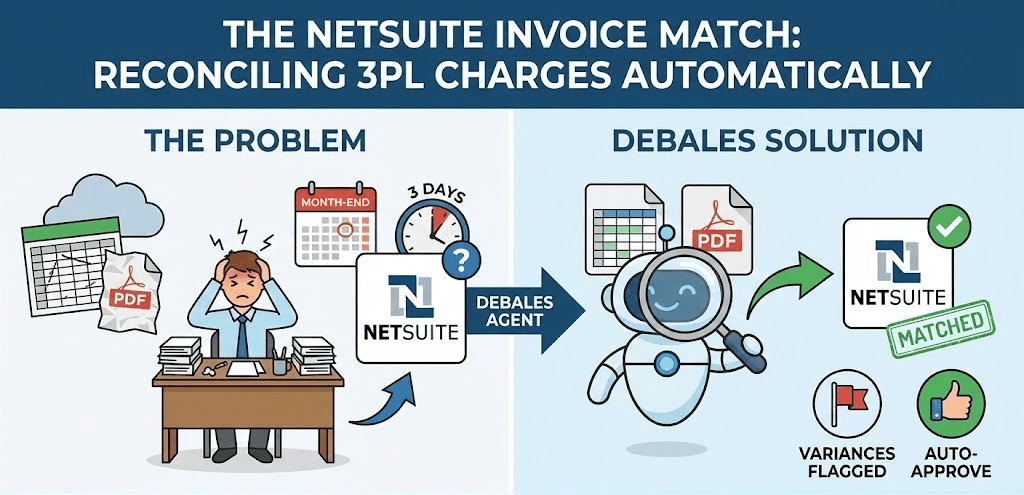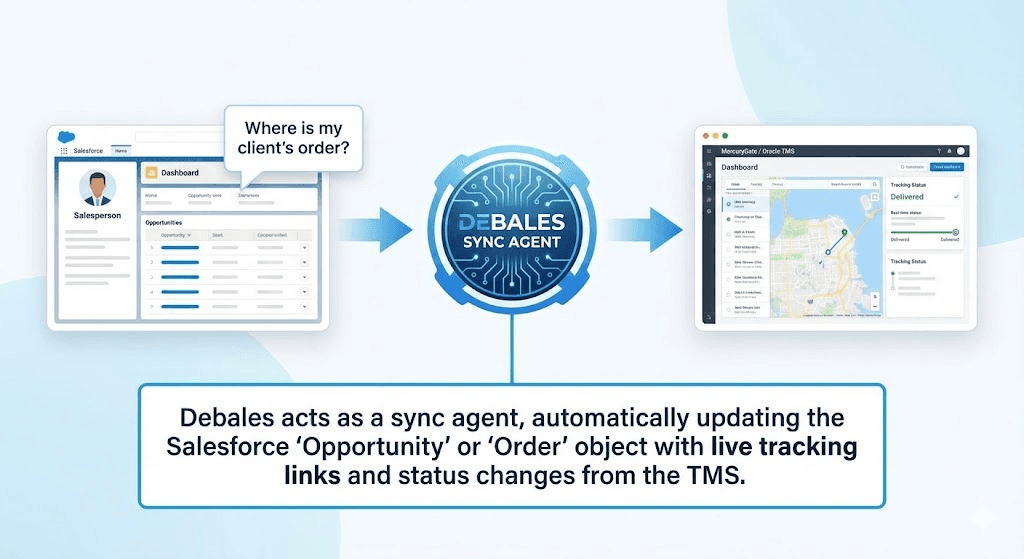First Practical Steps for Developing an AI Strategy in Logistics
Tuesday, 7 Oct 2025
|
What Are the First Practical Steps a Company Should Take to Develop an AI Strategy for Logistics?
As the logistics industry continues to evolve, companies must stay ahead of the curve to maintain their competitive edge. Artificial Intelligence (AI) offers immense potential to revolutionize logistics operations, from automating routine tasks to optimizing supply chains. However, for executives in logistics—CEOs, CXOs, and COOs—the prospect of implementing AI can seem daunting. How do you take those first steps toward integrating AI into your logistics strategy?
This article outlines the first practical steps to help logistics companies develop an AI strategy that is not only actionable but also delivers tangible results. Whether you’re looking to optimize routes, streamline inventory management, or enhance customer service, these initial steps will guide you toward creating a successful AI strategy.
Step 1: Align AI with Business Objectives
Before diving into AI tools or technologies, it's essential to understand what you want to achieve. AI isn’t a one-size-fits-all solution—it should be applied strategically to meet specific business needs. By aligning your AI strategy with clear business objectives, you ensure that the technology you implement solves real problems and drives measurable outcomes.
Actions to Take:
- Identify Pain Points: Start by assessing areas of your logistics operations that could benefit from automation or optimization. Are you experiencing inefficiencies in route planning? Do you struggle with inventory forecasting?
- Set Clear KPIs: Define the Key Performance Indicators (KPIs) that you want AI to improve. These could include reducing operational costs, improving delivery times, or enhancing customer satisfaction.
Real-World Example:
FedEx successfully leveraged AI to improve its logistics network by aligning AI with the objective of reducing fuel costs and enhancing delivery speed. By focusing on specific pain points, FedEx achieved measurable improvements in efficiency.
Aligning AI initiatives with your business strategy ensures that you focus on areas where AI can create the most value.
Step 2: Evaluate Data Readiness and Quality
AI solutions thrive on data. However, not all data is created equal. Before you implement AI, it's crucial to evaluate your data—its availability, quality, and structure. High-quality, accessible data is the foundation of any successful AI strategy.
Actions to Take:
- Assess Data Availability: Inventory the data sources already available in your organization, such as warehouse management systems (WMS), transportation management systems (TMS), and customer databases.
- Ensure Data Quality: AI relies on clean, well-structured data. Ensure that the data you plan to use is accurate, consistent, and up to date.
- Consider Data Gaps: Identify areas where data might be missing and explore ways to fill those gaps—whether it’s collecting more granular data or integrating external sources.
Real-World Example:
Maersk, the global logistics leader, invested heavily in cleaning and structuring its data. By leveraging its data on shipping, port congestion, and weather, Maersk implemented AI to optimize shipping routes, significantly improving their supply chain.
The better the data, the more accurate and effective your AI models will be.
Step 3: Select the Right AI Technologies
AI in logistics covers a broad range of technologies, from machine learning (ML) for predictive analytics to computer vision for inventory management. Choosing the right AI technologies for your business depends on your specific goals and the problem you’re trying to solve.
Technologies to Consider:
- Machine Learning (ML): For predictive analytics, demand forecasting, and route optimization.
- Robotic Process Automation (RPA): For automating repetitive tasks like invoice processing and shipment tracking.
- Natural Language Processing (NLP): For improving customer service through AI-driven chatbots and automated emails.
- Computer Vision: For inventory management, tracking, and quality control.
Real-World Example:
DHL uses computer vision to automate inventory management and improve order picking accuracy. Their AI strategy focuses on leveraging this technology to handle increasing volumes efficiently.
Identifying the right technology that aligns with your needs will help you maximize the potential of AI.
Step 4: Start with Pilot Projects
Implementing AI across an entire logistics operation can be overwhelming. Instead, start with pilot projects to test AI in a controlled environment. This approach allows you to assess the performance of AI systems on a small scale before committing to a full implementation.
Actions to Take:
- Select High-Impact Areas: Choose specific areas in your logistics operations where AI can have an immediate, measurable impact. Popular choices include demand forecasting, route optimization, and predictive maintenance.
- Set Clear Metrics: Define how success will be measured, using KPIs such as cost savings, time reductions, or increased accuracy.
- Measure Results: Track performance and gather feedback to refine the AI solution and expand to other areas.
Real-World Example:
UPS started its AI journey with a pilot project to optimize delivery routes using AI-powered software. The success of this initiative allowed UPS to scale its AI capabilities across other areas, improving fleet efficiency and reducing delivery times.
By starting small, you can mitigate risks and refine your approach before scaling.
Step 5: Build an AI-Savvy Team
AI is not just about technology; it’s also about the people who will manage, optimize, and scale it. Building an internal team with the right skills and expertise is critical for long-term success.
Actions to Take:
- Invest in Training: Equip your team with the skills needed to work with AI systems, from data science to AI tools and techniques.
- Hire AI Experts: Consider hiring specialists, such as data scientists or AI engineers, who can guide the implementation and optimization of AI models.
- Foster Collaboration: Encourage cross-departmental collaboration to ensure that AI solutions integrate smoothly across your logistics operations.
Real-World Example:
Amazon has invested heavily in building AI capabilities, hiring thousands of engineers, and fostering a culture of continuous learning. Their AI-powered logistics network is one of the most advanced in the world, thanks to their focus on building internal expertise.
An AI-savvy team ensures that your AI strategy is managed effectively and evolves over time.
Step 6: Monitor, Optimize, and Scale
AI is not a one-time solution. It requires ongoing monitoring and optimization to ensure it continues to meet your business objectives. After your pilot project succeeds, you can begin scaling AI solutions across your logistics operations.
Actions to Take:
- Track Performance: Continuously monitor AI performance against the defined KPIs.
- Refine and Improve: Regularly optimize your AI models by retraining them with new data and adjusting parameters to improve accuracy.
- Scale Gradually: As the AI solution proves successful in one area, expand it to other parts of your operation to maximize ROI.
Real-World Example:
Kuehne + Nagel continually optimizes its AI systems to enhance freight management, improving visibility, cost savings, and service reliability. They monitor AI performance across their global network, adjusting for changes in demand and supply.
AI can grow with your business as long as you maintain a strategy for ongoing optimization.
Conclusion: Starting Your AI Journey with Confidence
AI offers immense potential for logistics companies, but success hinges on taking the right first steps. By aligning AI with your business goals, ensuring data readiness, selecting the right technologies, and starting with pilot projects, you can create a robust foundation for AI implementation. With continuous monitoring and scaling, AI can transform your logistics operations and drive long-term success.
Next Steps: Book a Demo with Debales AI!
If you’re ready to explore how AI can revolutionize your logistics operations, Debales AI offers tailored solutions that can help you get started with minimal disruption and maximum impact. Book a demo with us today to see how we can support your AI journey.
Suggested Posts:
For further reading on implementing AI in logistics, check out these helpful resources:


